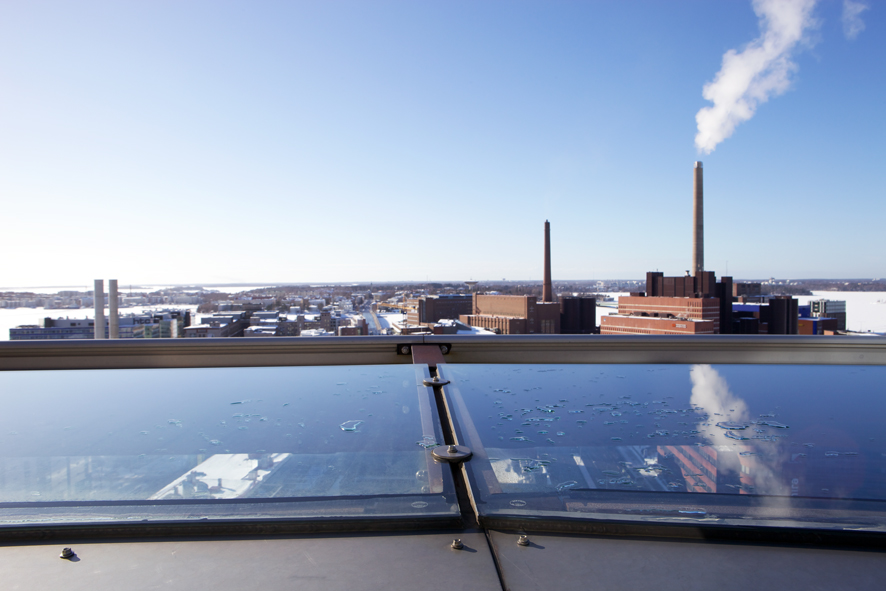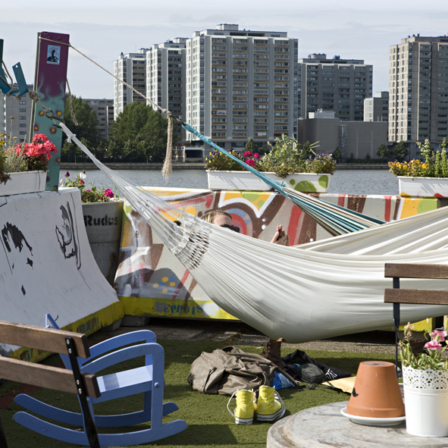As climate change gains momentum, we need to reduce our greenhouse gas emissions radically. Although global agreements have not been as effective as hoped and emission levels have not fallen, many states, cities, firms and communities have committed themselves to an array of emission reduction and carbon-neutrality targets.
“In the future, emission reduction will be integral to both regional and global agendas – and those firms and regions that have created the best-functioning solutions will be the ones that succeed,” says Sitra’s Lead Specialist Lari Rajantie.
Each Finn has an annual carbon footprint of slightly under 9,000 kilograms, 70 per cent of which is comprised of emissions from transport, food production and housing. Experts at the Finnish Environment Institute (SYKE) point out that cutting greenhouse gas emissions is possible because we already have the methods that will enable us to do so.
“Emission reductions of up to several dozen per cent could be achieved relatively easily, by introducing various efficiency-boosting measures,” says Senior Research Specialist Riina Antikainen from SYKE. “However, further reductions will require major structural changes and investments, such as switching from fossil fuels to renewable energy sources and implementing an industrial transformation and infrastructure reform.”
The zero-emissions target will be much more difficult to achieve – but is nonetheless possible. Reaching the zero-emissions target would mean sourcing all of the energy we need from renewable sources, with the transport sector using renewables and biofuels, and emissions from food production having been minimised. The remaining carbon-equivalent emissions can be offset through intensive tree planting, for example.
“For Finland, it is important to ensure that its forests retain their carbon capture capacity. It is possible to store the carbon sequestered in trees in wood products and construction materials,” says Antikainen.
Emission reduction targets put pressure on companies to reduce their energy use, intensify their operating methods and transform their services, but they can also create new business opportunities and work.
“Logistics solutions will also have to be rethought. The energy-efficiency of long distance transport has already been boosted in many cases, but local transport services can be very poor in terms of energy-efficiency, generating large amounts of emissions,” says Antikainen.
It is important for cities to have an energy-efficient building stock and urban structure, and a system for generating energy from renewable sources. When it comes to different energy solutions, a district heating system using wood-based fuels would be a good option.
“District heating based on woodchips is often a good way of reducing emissions quickly in a given area. District heating has a high efficiency rate, and wood is a renewable resource. If produced locally, woodchips can also have a significant impact on the regional economy and local employment rate,” says Kaarina Toivonen from SYKE.
A range of services and tools is available to support municipalities in their efforts to combat climate change. Financial support is being granted for energy audits and energy-related investments. Energy advice and specialist support services are also available. An interesting alternative funding model for implementing energy-related projects is the ESCO model (Energy Service Company), whose ROI (return on investment) is based on the savings generated through the project. For example, there is no need for huge sums of money in order to launch major energy-efficiency improvement projects for city-owned buildings; instead, the investments pay themselves back without unbalancing a city’s budget.
In the distant future, our energy systems are certain to be very different to now. For example, households may well be producing all the energy they need using wind, biomass, solar and thermal energy sources. Or we may have a national or Europe-wide smart electricity system based on renewable energy.
“No one can predict precisely what lies ahead of us, but we do know the direction in which we should be moving,” Rajantie concludes. “Carbon-neutrality is not a utopia, but a fully achievable goal for any city in Finland that has the willpower to do what it takes. Investing in emission reduction will take us towards a low-carbon future – but path dependency works both ways. That is why it is important that we start building a carbon-neutral future in our cities right now.”




Recommended